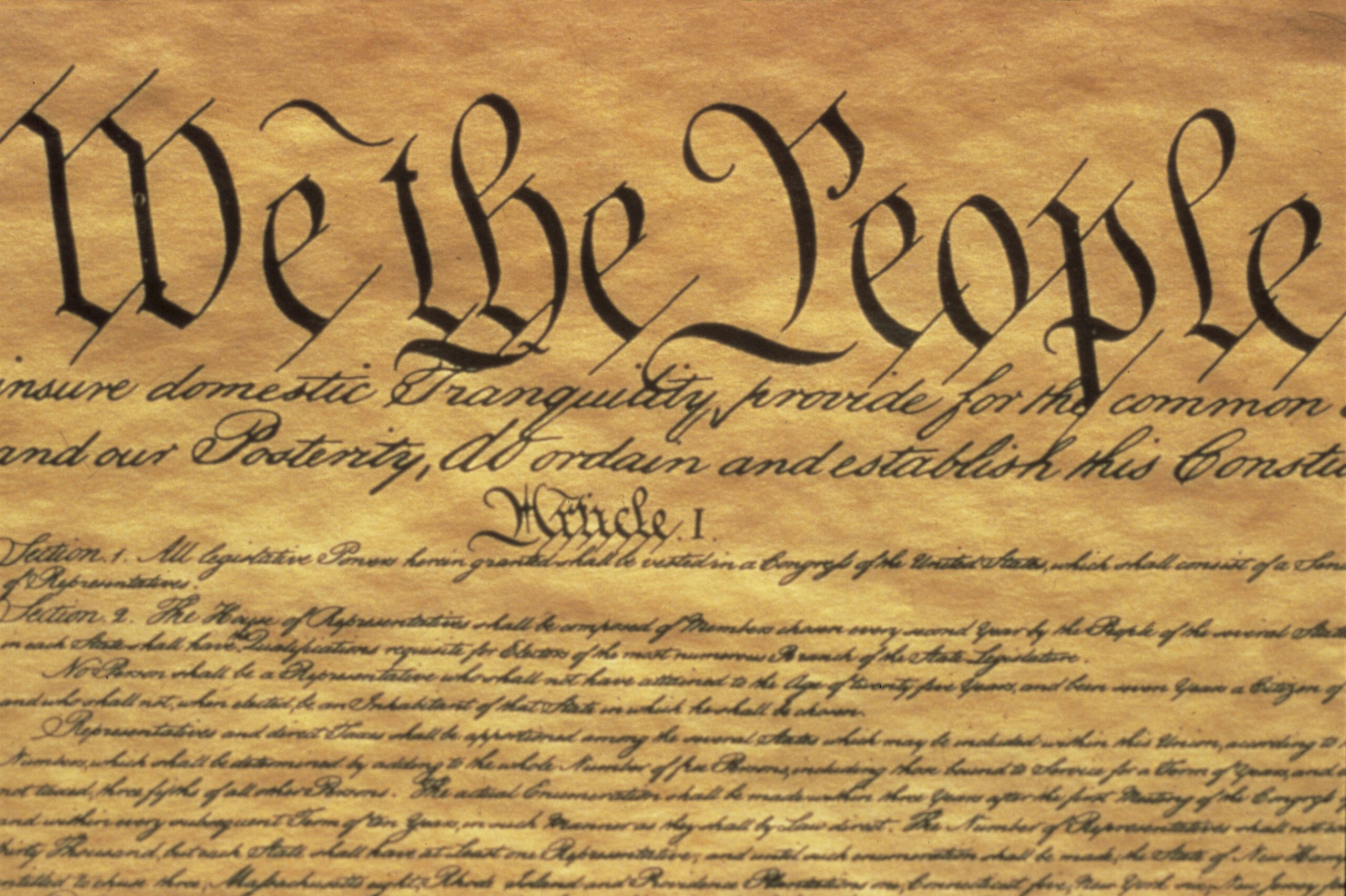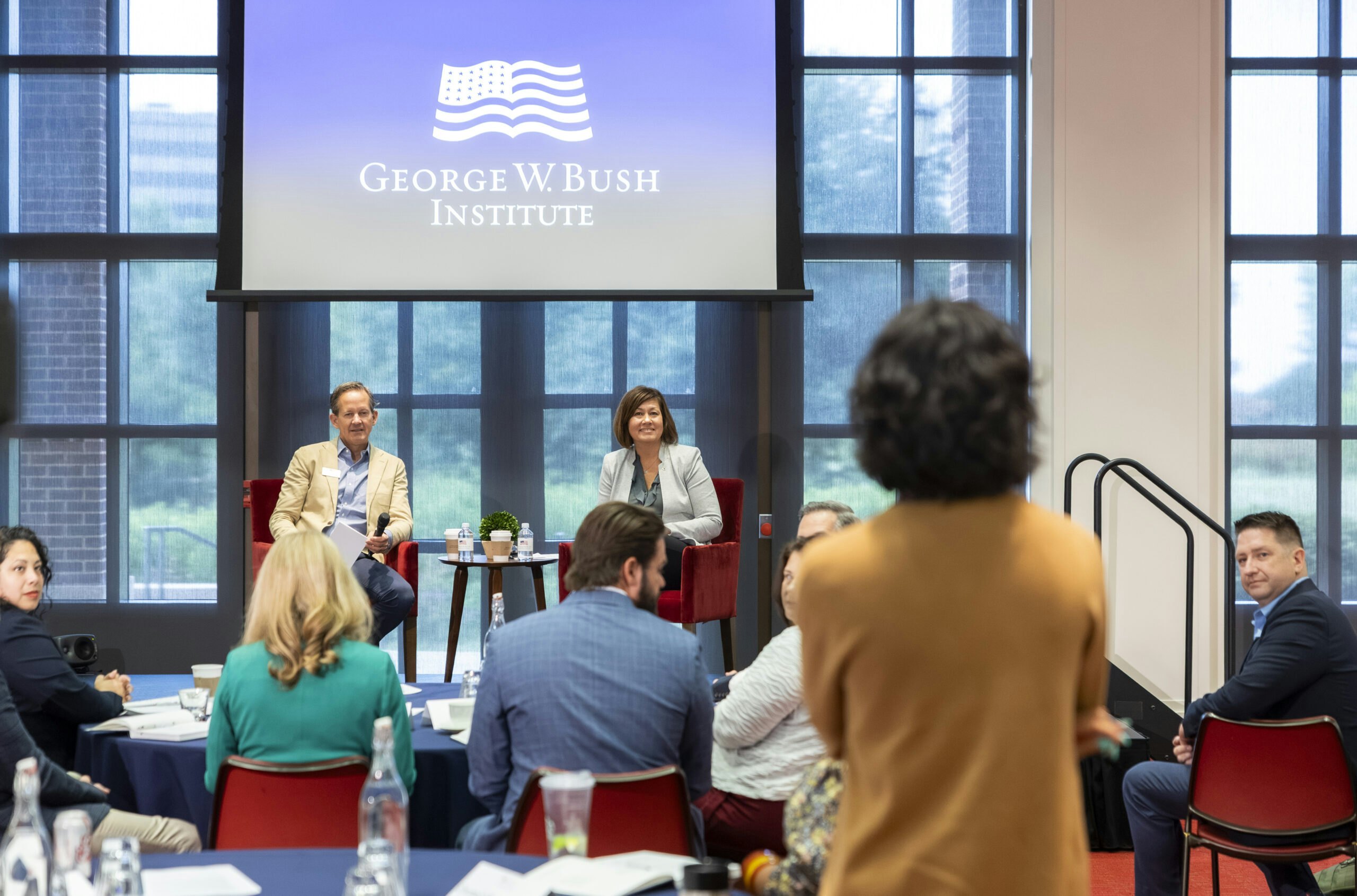The Bush Center’s new exhibit, Freedom Matters, highlights the importance of freedom and democracy through rare artifacts, historical documents, and interactive activities. Visitors are immersed in a journey through the experience of freedom itself, including where freedom comes from, what it means, the characteristics of free societies, and the role of the individual in protecting and spreading freedom around the world.
Here are five must-see items in the special exhibit, open through Dec. 31, 2023:
1. 19th Century version of the Declaration of Independence
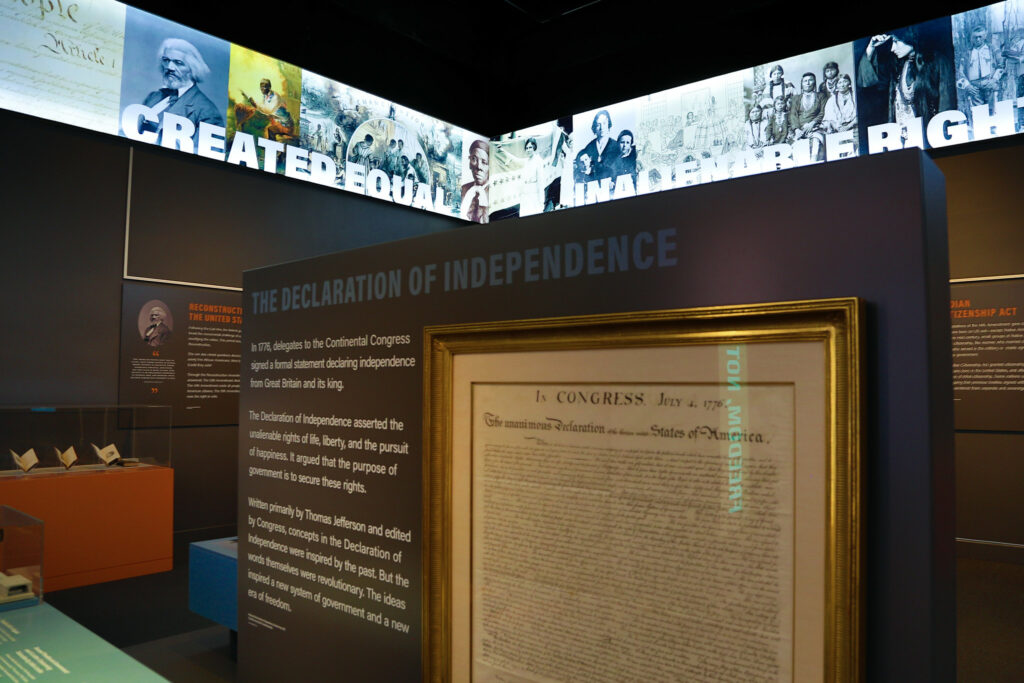
An almost 200-year-old version of the Declaration of Independence on loan from Harlan Crow is on display in the special exhibit. In 1776, this document formally declared U.S. independence from Great Britain and its king and asserted the rights of life, liberty, and the pursuit of happiness. This artifact was printed in 1831 by Peter Force, who was commissioned by Congress to create a history of the United States.
2. Guess the freedom advocate activity
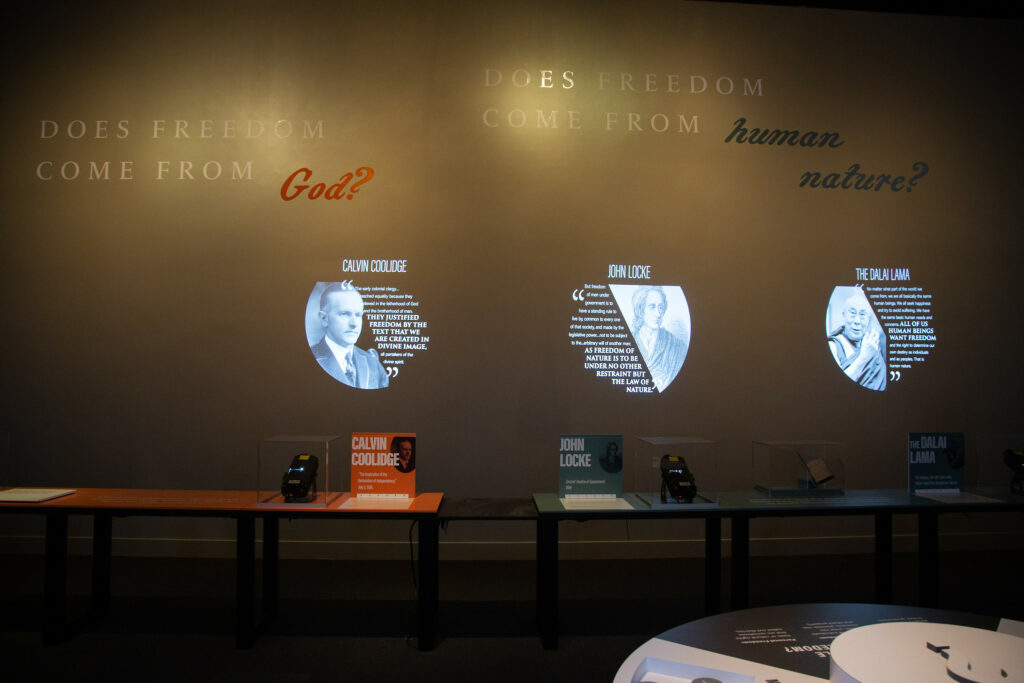
Museumgoers can participate in an interactive activity in which they read a short biography and guess which freedom advocate is being described to them. After making a guess, the participant can lift up a panel and the correct historical figure will be projected on the wall in front of them. From John Locke to the Dalai Lama to Calvin Coolidge, visitors to the Freedom Matters exhibit will learn about important figures who advocated for liberty throughout history.
3. The Magna Carta
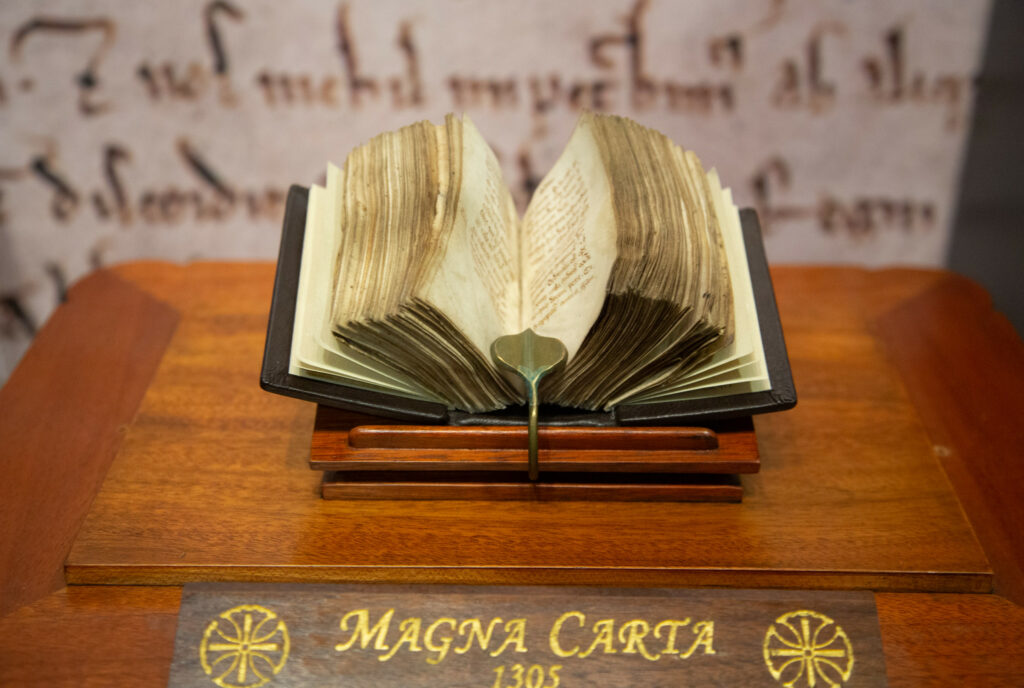 A pocket-sized reference of English statutes dating back to 1305, including the Magna Carta, is on display in the Freedom Matters exhibit. The Magna Carta was the first document to put into writing that the king and his government were not above the law. This more than 700-year-old artifact, on loan to the Bush Center from Harlan Crow, lives on in clauses still enshrined in British law today, including that the law is applicable to all people and the right to due process.
A pocket-sized reference of English statutes dating back to 1305, including the Magna Carta, is on display in the Freedom Matters exhibit. The Magna Carta was the first document to put into writing that the king and his government were not above the law. This more than 700-year-old artifact, on loan to the Bush Center from Harlan Crow, lives on in clauses still enshrined in British law today, including that the law is applicable to all people and the right to due process.
4. Emancipation Proclamation from 1863
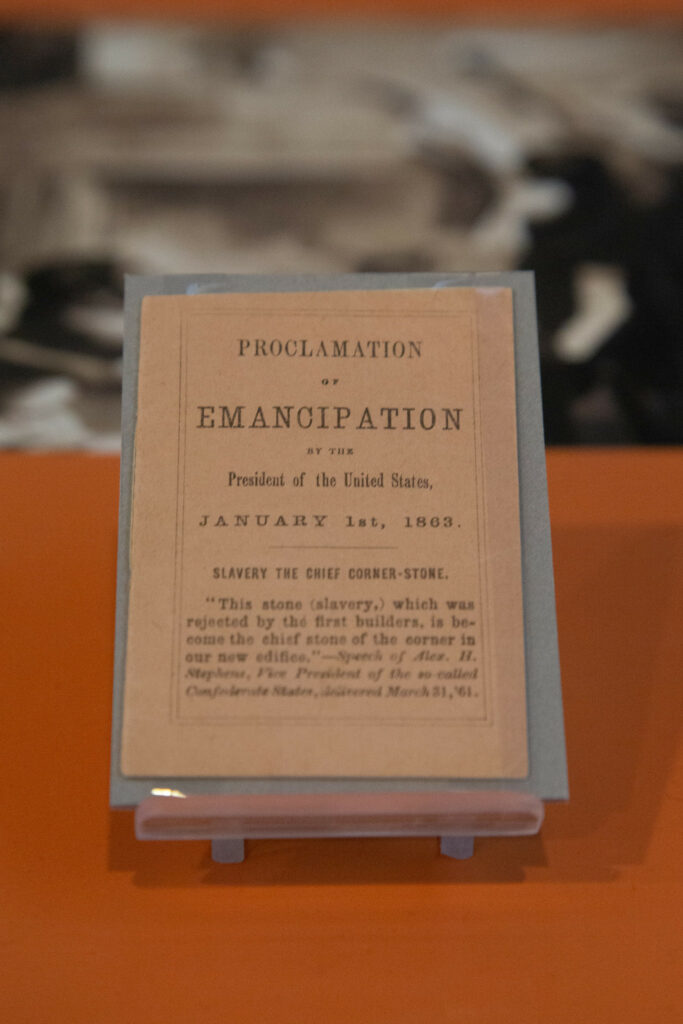
An 1863 version of the Emancipation Proclamation, on loan from David Rubenstein, is displayed in the special exhibit. Issued by President Lincoln on Jan. 1, 1863, this document declared that all slaves held in Confederate states were free. The government wanted to spread the word of the Emancipation Proclamation among African Americans, so it printed small booklets, measuring just over three inches, for Union soldiers to distribute throughout the South.
5. Interactive “match these freedoms” activity

Visitors to the Freedom Matters exhibit can participate in an interactive activity in which they match different freedoms with the correct category: political freedom, economic freedom, or personal freedom. Participants are able to test their knowledge while learning more about how to define and categorize freedom.


























